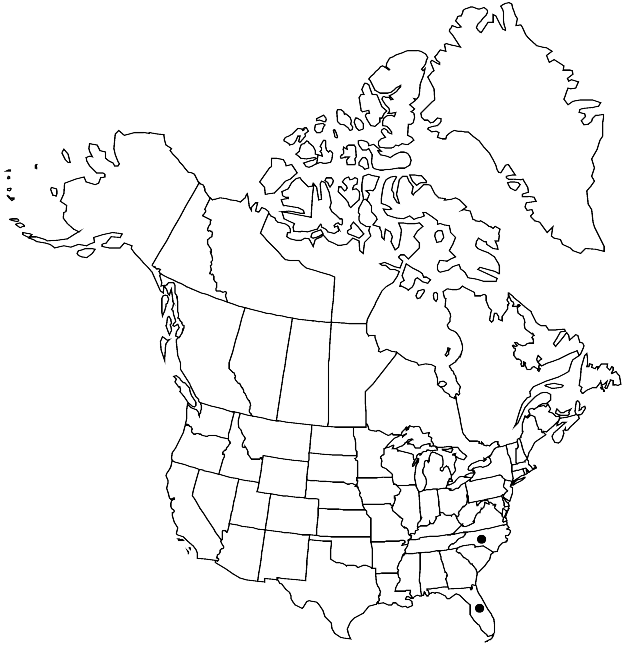Difference between revisions of "Plagiobryoides cellularis"
Phytologia 91: 499. 2009.
imported>Volume Importer |
imported>Volume Importer |
||
| Line 50: | Line 50: | ||
|publication year=2009 | |publication year=2009 | ||
|special status= | |special status= | ||
| − | |source xml=https:// | + | |source xml=https://bitbucket.org/aafc-mbb/fna-data-curation/src/2e0870ddd59836b60bcf96646a41e87ea5a5943a/coarse_grained_fna_xml/V28/V28_240.xml |
|genus=Plagiobryoides | |genus=Plagiobryoides | ||
|species=Plagiobryoides cellularis | |species=Plagiobryoides cellularis | ||
Latest revision as of 21:34, 5 November 2020
Plants pale pink-green. Stems 0.5–1 cm, weakly julaceous, innovations many; rhizoids few on proximal stem. Leaves crowded, imbricate when dry, erect when moist, narrowly to broadly ovate, flat or weakly concave, 0.4–1(–2.5) mm; base not decurrent, pink; margins plane or recurved proximally, 1-stratose, limbidium absent or rarely 1-stratose proximally; apex acute; costa reaching apex to very short-excurrent; proximal laminal cells long-rectangular, (60–)80–100 × 18–24 µm, 4–5:1, sometimes bulging, walls thin; distal cells elongate hexagonal, 30–70 × 16–22 µm, 2–4:1, walls thin. Specialized asexual reproduction absent. Sexual condition dioicous. [Seta thick, (1–)2–3 cm, flexuose to twisted. Capsule inclined to nutant, 2–4 mm; hypophysis strongly differentiated, elongate; operculum apiculate; peristome well developed; exostome pale yellow or tan proximally, teeth lanceolate, long; endostome hyaline to pale yellow, not adherent to exostome, segments present, sometimes longer than exostome, cilia usually absent, occasionally 1 or 2. Spores 20–28 µm, papillose, yellow-brown].
Habitat: Damp to seepy rock
Elevation: low elevations (10 m)
Distribution

Fla., N.C., Mexico, West Indies, Central America, South America, se Asia (including Indonesia), Africa, Pacific Islands (New Guinea), Australia.
Discussion
Plagiobryoides cellularis is a widespread pantropical species. The North American material is very poor, consisting of a few small sterile shoots from two sites: on rocks near the sea on the Florida Keys and wet rock in North Carolina.
Selected References
None.